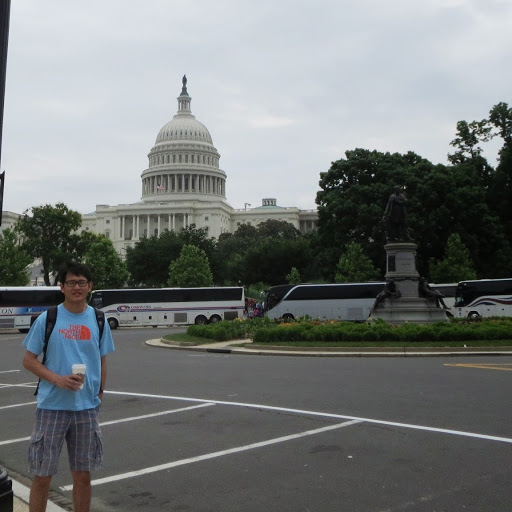Bin Cheng
age ~54
from Edison, NJ
- Also known as:
-
- Bi N Cheng
- Bing Cheng
- Bin Chang
- Bin Chen
- Rudy Pina
- Beth Doran
- Phone and address:
-
210 Monroe Ave, Edison, NJ 08820
(732)6351563
Bin Cheng Phones & Addresses
- 210 Monroe Ave, Edison, NJ 08820 • (732)6351563
- 80 Bloomfield Ave, Edison, NJ 08837
- Plainsboro, NJ
- New York, NY
- 2305 Park St, Madison, WI 53713 • (608)2502684
- 202 Eagle Hts, Madison, WI 53705 • (608)2364129
- 304 Eagle Hts, Madison, WI 53705 • (608)2181380
- Syosset, NY
Education
-
School / High School:The University of Chicago Law School
Ranks
-
Licence:New York - Currently registered
-
Date:2002
Isbn (Books And Publications)


General Principles of Law As Applied by International Courts And Tribunals
view sourceAuthor
Bin Cheng
ISBN #
0521030005

General Principles of Law As Applied by International Courts And Tribunals
view sourceAuthor
Bin Cheng
ISBN #
0521463335

Contemporary Problems of International Law: Essays in Honour of Georg Schwarzenberger on His Eightieth Birthday
view sourceAuthor
Bin Cheng
ISBN #
0420479201
Lawyers & Attorneys

Bin Cheng - Lawyer
view sourceAddress:
Skadden, Arps, Slate, Meagher & Flom
(374)04762xx (Office)
(374)04762xx (Office)
Licenses:
New York - Currently registered 2002
Education:
The University of Chicago Law School
Us Patents
-
Methods And Systems For Scheduling Mmwave Communications Among Connected Vehicles
view source -
US Patent:20220338214, Oct 20, 2022
-
Filed:Apr 20, 2021
-
Appl. No.:17/235320
-
Inventors:- Plano TX, US
Chenyuan He - Zhengjiang, CN
Bin Cheng - New York NY, US
Takayuki Shimizu - Santa Clara CA, US -
Assignee:Toyota Motor Engineering & Manufacturing North America, Inc. - Plano TX
-
International Classification:H04W 72/12
H04W 72/04
H04W 72/02
H04W 4/40 -
Abstract:A vehicle includes a processor configured to transmit a mmWave beacon signal during a probe phase of a first period; receive one or more mmWave beacon signals from one or more vehicles; generate a mmWave communication intention message for another period that is after the first period based on the received one or more mmWave beacon signals; and broadcast, during the first period, a packet including a mmWave transmission schedule for the another period generated based on the mmWave communication intention message.
Resumes

Bin Cheng
view source
Bin Cheng
view sourceYoutube
Googleplus

Bin Cheng
Work:
Stony Brook University - Teaching Assistant
Education:
State University of New York at Stony Brook - Materials Science and Engineering, Nanjing University of Aeronautics and Astronautics - Materials Science and Engineering

Bin Cheng
Work:
UCRiverside - TA/RA

Bin Cheng
About:
Tencent RD, Focused on Storage System,especially in the NOSQL and SQL

Bin Cheng

Bin Cheng

Bin Cheng

Bin Cheng

Bin Cheng
News

Scientists Say Something Seems to Have Broken Off the Moon at This Crater
view source- "The possibility of a lunar-derived origin adds unexpected intrigue to the mission and presents additional technical challenges for the sample return," coauthor and Tsinghua University planetary scientist Bin Cheng told Science.
- Date: Apr 22, 2024
- Category: Science
- Source: Google

The Strange Mystery of Phobos' Tiger Stripes May Finally Be Solved
view source- "Our analysis supports a layered heterogeneous structure for Phobos with possible underlying failure-induced fractures, as the precursor of the eventual demise of the de-orbiting satellite," write a team of astronomers led by Bin Cheng of Tsinghua University in China and the University of Arizona.
- Date: Nov 18, 2022
- Category: Science
- Source: Google

Bin Cheng
view source
Ker Bin Cheng
view source
Bin Cheng
view source
Bin Cheng
view source
Bin Cheng
view source
Bin Cheng
view source
Cheng Bin
view source
Bin Cheng
view sourcePlaxo

Cheng Bin
view sourceAlpha metals
Get Report for Bin Cheng from Edison, NJ, age ~54




